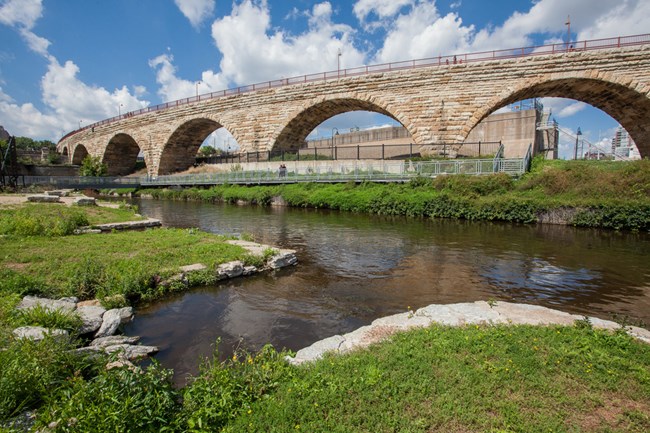
NPS Photo
Overview
Mississippi National River and Recreation Area is a national park unit of the NPS and follows 116 km of the Mississippi River through the greater Twin Cities metropolitan area in Minnesota. Within the Mississippi River corridor, the forests deep within the riverine floodplain are mostly dominant—and often monotypic. Sand and mud flats along the Mississippi River host annual forbs that normally scour away every year with floods. More protected floodplain areas, including backwater pools, cutoff oxbows, and even behind man-made structures, support an environment more conducive to persistent herbaceous vegetation. Outside of protected areas, herbaceous vegetation is ruderal and common to fallow and open fields.The Mississippi National River and Recreation Area Vegetation Inventory Project delivers many geospatial and vegetation data products, including an in-depth project report discussing methods and results, which include descriptions to vegetation associations, field keys to vegetation associations, map classification, and map-class descriptions. The suite of products also includes a database of vegetation plots, and accuracy assessment (AA) sites; digital images of field sites; digital aerial imagery; digital maps; a contingency table listing AA results; and a geodatabase of vegetation, field sites (vegetation plots, and AA sites), aerial imagery, project boundary, and metadata.
Products
The products of vegetation mapping projects are stored and managed in the National Park Service's Data Store, a repository for documents and publications relating to park resources. From the highlighted items below, click on the type of information you are looking for.
Last updated: October 18, 2018
